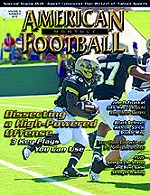Article CategoriesAFM Magazine
|
Letter from AFMby: John GallupEditor and Publisher © More from this issue My teenage son was a hotshot linebacker on his freshman football squad a few years ago. He had the size, speed and athletic ability to have a nice high school football experience and I was anticipating three more years of proudly supporting him and his team. So, when he told me he was quitting football for rugby, I was naturally a little disappointed. More so, I was concerned that he would be playing a violent sport with bone-jarring tackling without any protective equipment. In particular, I was worried about head injuries and the possibility of concussions. His three seasons of rugby, which included a Florida state championship, were not injury-free. But I can’t recall ever seeing him or any of his teammates take or deliver a serious blow to the head. The rules of rugby, and the practical reality of playin....The full article can only be seen by subscribers.
|
|
|||||||
| HOME |
MAGAZINE |
SUBSCRIBE | ONLINE COLUMNISTS | COACHING VIDEOS |
Copyright 2025, AmericanFootballMonthly.com
All Rights Reserved





